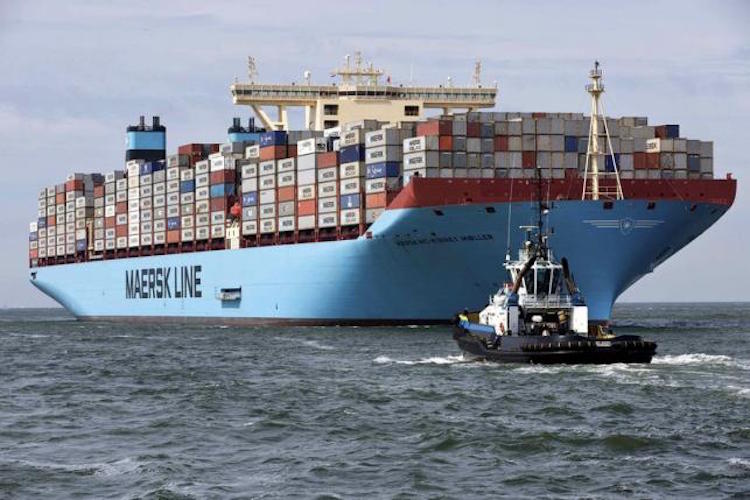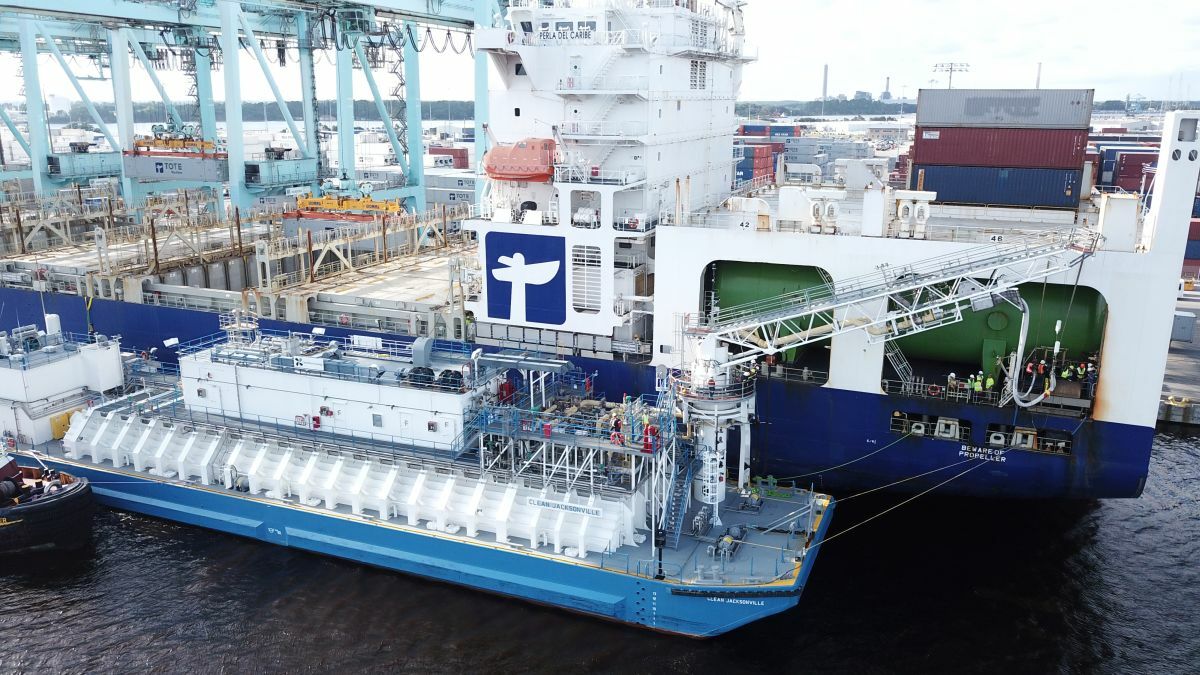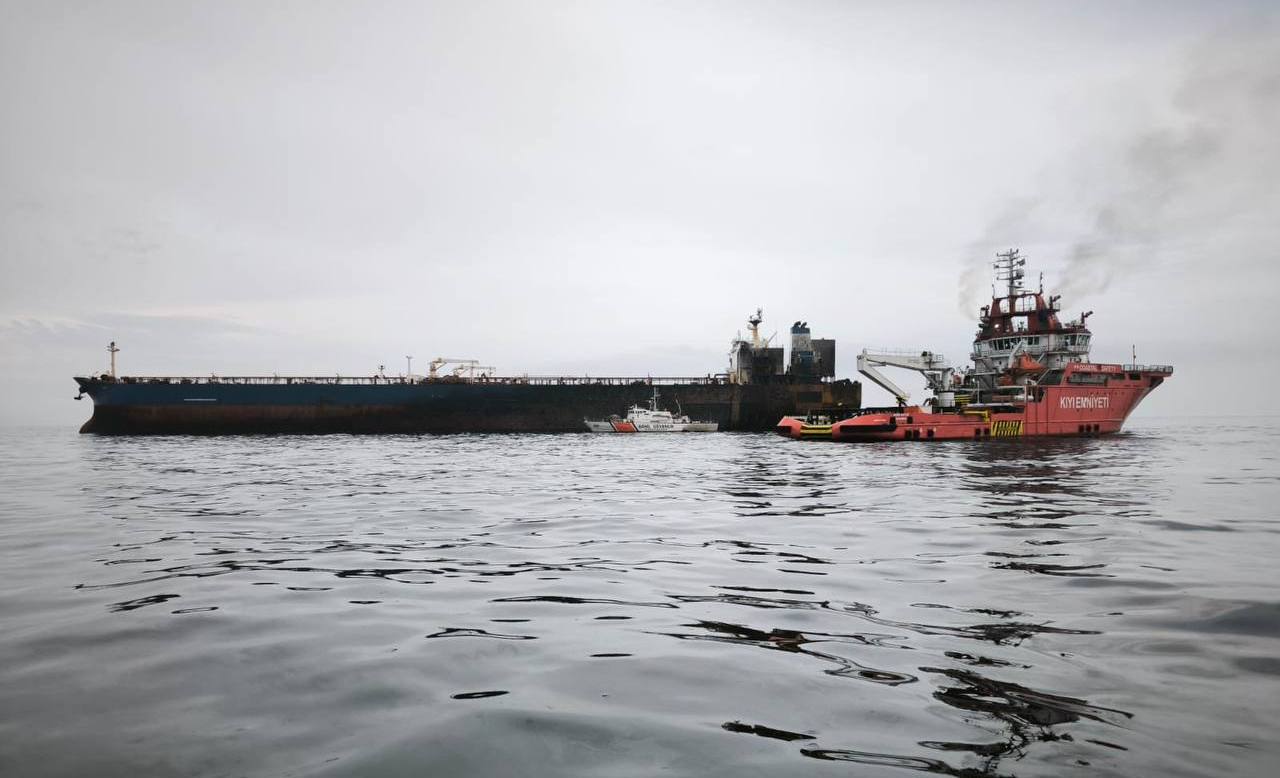MV Maersk Mc-Kinney Moller arrives at the harbor of Rotterdam August 16, 2013, (c) REUTERS/Michael Kooren
 By John Kemp
By John Kemp
LONDON, April 12 (Reuters) – Fuel consumption is not very sensitive to a small change in prices in the short run, but if the price change is large enough and lasts long enough the amount used can change significantly.
The 60 percent decline in oil prices over the last two years has now been large enough and lasted long enough that it is starting to have a significant impact on the medium-term outlook for oil demand.
Most crude oil is used as a transportation fuel in aircraft, ships, trains, trucks and cars, which is where the biggest impact of lower prices on consumption is being felt (“Essentials of petroleum”, Frankel, 1946).
Between 2004 and 2014, the apparently relentless surge in oil prices resulted in a sharp focus on improving fuel efficiency.
Container ships and oil tankers switched to slower speeds to reduce fuel consumption, a practice known in the industry as “slow steaming”.
Fuel consumption rises with the third power of speed so even a relatively modest reduction in speed results in a big saving on fuel.
Slower speeds result in longer journey times and need more ships to move the same volume of freight but shipping lines were prepared to absorb higher capital costs in order to save on the running cost of fuel.
Even airlines instructed aircraft to fly slightly slower to save on fuel (“Airlines fly slower to cut fuel bill”, Reuters, Sept. 2014).
More importantly, airlines cut weight and fuel consumption by reducing the amount of unnecessary fuel, water and other items carried on board.
In another economy measure, airlines reduced ultra-long non-stop routes, which force aircraft to carry more fuel on board (fuel weight is a substantial source of energy consumption).
And on land, trucking firms and logistics operators focused on optimising route networks to save on fuel bills while consumers opted for smaller and more fuel-efficient vehicles.
The entire transportation system became significantly more efficient, which is a major reason fuel consumption consistently declined in the advanced economies between 2005 and 2014 (http://tmsnrt.rs/1qNdWQ7).
But now the cost of fuel has fallen sharply and seems set to remain low for the next several years, the focus has shifted from fuel efficiency to speed, power and convenience.
The impact remains patchy and hard to quantify, but there are plenty of signs that cheaper fuel prices are reversing or at least blunting the former trend towards increased fuel efficiency.
SPEEDING UP
Fuel economy standards in the United States are improving the fuel efficiency of both cars and light trucks such as crossover utility vehicles.
However, the fuel economy regulations specify separate standards for cars and light trucks (stricter standards for cars and more generous ones for trucks).
Consumers have responded to the drop in prices by opting to buy more trucks and fewer cars, lowering the economy-wide fuel savings compared with the original projections.
The fuel economy regulations assumed consumer vehicle purchases would split roughly 60:40 between cars and trucks by 2016 but instead the split is almost 40:60.
As a result, the fuel economy standards are on track to deliver only half to two-thirds of the anticipated reduction in fuel consumption (“Low gas prices expose flaw in U.S. fuel economy standards”, Forbes, April 11).
The relaxation of fuel economy is evident in the air where airlines have been adding more ultra-long flights and seat utilisation has edged down (“Long-haul flights get longer”, Wall Street Journal, April 10).
Cheap fuel is also helping stimulate a surge in delivery services and has made possible the focus on super-fast home deliveries being pioneered by Amazon’s Prime service.
Delivery services are the fastest growing part of the freight network at the moment and expected to provide most of the demand growth over the next decade (“DOT releases 30-year freight projections”, BT, March 3).
Amazon is investing heavily in building up its own air freight capacity to meet surging demand for deliveries within 24 to 48 hours (“Amazon’s airfreight moves raises hopes in cargo business”, Wall Street Journal, April 7).
The emphasis within the entire transport system is shifting from minimising (fuel) cost to maximising speed and convenience.
Trucking companies are increasing competing to offer faster delivery service to customers willing to pay a premium (“Trucking company’s new sales pitch: speed”, Wall Street Journal, April 11).
The emphasis on speed at the expense of efficiency is even evident in the growth of rail services between Asia and Europe seeking to win volume from maritime routes (“China-Europe containerized rail shipments gain momentum”, Journal of Commerce, 2015).
AROUND AFRICA
In the maritime sector, the reversal of the earlier efficiency drive is more ambiguous. The major container shipping companies invested heavily in a new generation of megacarriers designed to travel slowly with high fuel efficiency.
The sector is now struggling with a large overhang of surplus capacity thanks to the investment boom and sluggish growth in world trade (“Megaships are worsening overcapacity in the container market”, Reuters, Sept. 2015).
In theory, lower fuel prices should allow shipping lines to speed up sailing times and reduce the number of ships employed.
But having spent so much on megacarriers designed to travel slowly and efficiently, shipping lines are struggling to keep them filled and have few incentives to increase speed.
Maersk, one of the largest container lines, has indicated it has no intention to reverse the slow steaming policy.
Maersk points out that ending the slow steaming policy would require major re-planning of its entire network (“Reports of the death of slow-steaming by box carriers are greatly exaggerated”, The Load Star, 2015).
But some smaller shipping lines have ended slow steaming and are promising faster sailing times in a bid to win business (“Demand for faster transit times could signal an end to era of slow-steaming”, The Load Star, 2015).
Away from the container sector, crude oil tankers are now travelling faster thanks to a combination of higher freight rates on the main Middle East to Asia routes and cheaper fuel.
Cheaper fuel costs are also making themselves felt in other ways. More tankers and container ships are taking the long way round Africa via the Cape rather than transiting the Suez Canal to save on canal fees.
An unusually large number of ships elected to travel via the Cape rather than the canal during the final three months of 2015, according to shipping analysts (“Cheap oil is taking shipping routes back to the 1800s”, BBC, March 4).
EMBEDDED EXPECTATIONS
Current and expected fuel prices influence millions of decisions about transport equipment purchases and operations from cars and trucks to ships and aircraft (“Lower oil prices will blunt drive for fuel efficiency”, Reuters, Jan. 2015).
Individually, none of these decisions is large enough to affect the oil market, but collectively they have a big impact on oil demand over time.
High and rising oil prices between 2004 and 2014 compelled an increase in fuel efficiency and restrained fuel demand even though the full impact did not filter through until 2010-2014.
Lower oil prices are now shifting the balance once again in the direction of bigger cars, faster freight deliveries and more routes, in a replay of the late 1980s and 1990s.
The full impact of the new equipment purchasing and operational decisions may not be evident for some time but it is already helping support faster growth in oil demand in 2015/16.
Capital expenditure and operating decisions will continue to raise demand for oil in the medium term unless and until prices rise again. (Editing by Susan Thomas)
(c) Copyright Thomson Reuters 2016.

 Join The Club
Join The Club











